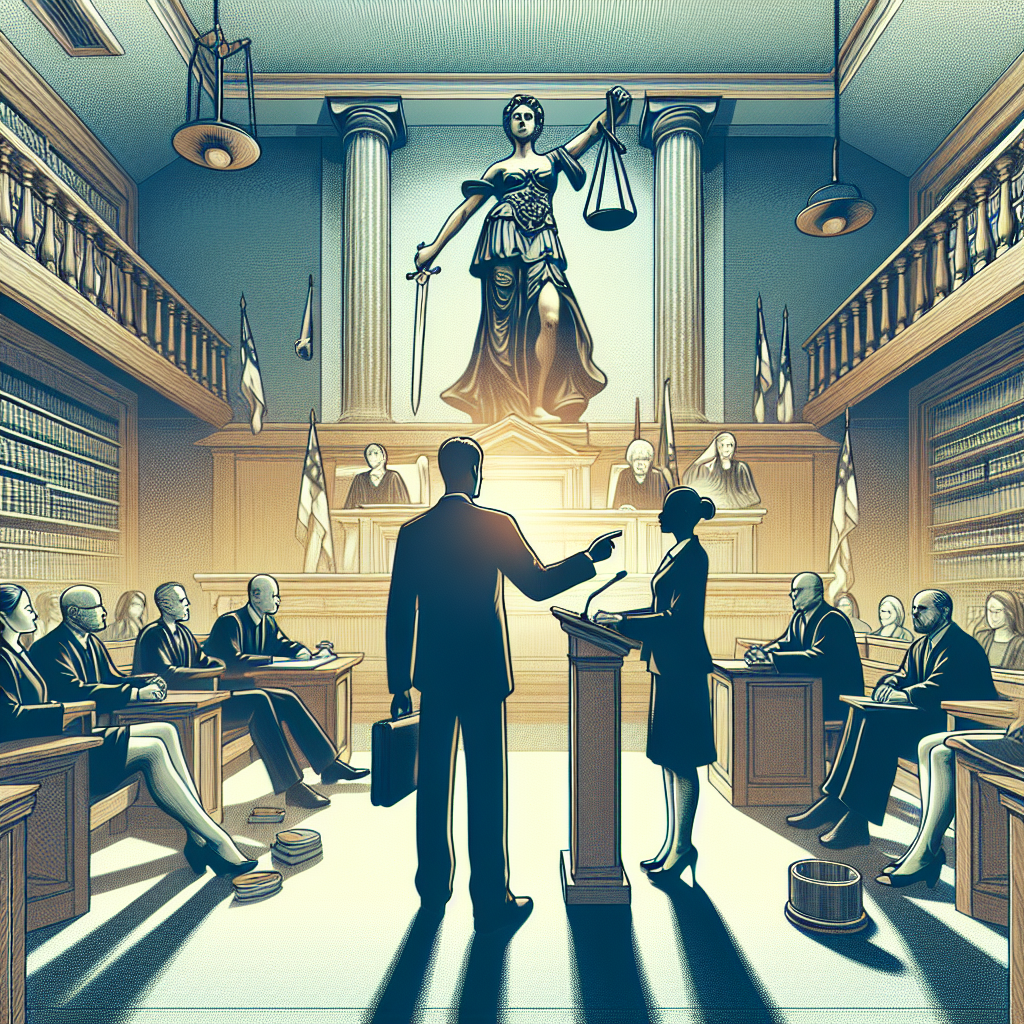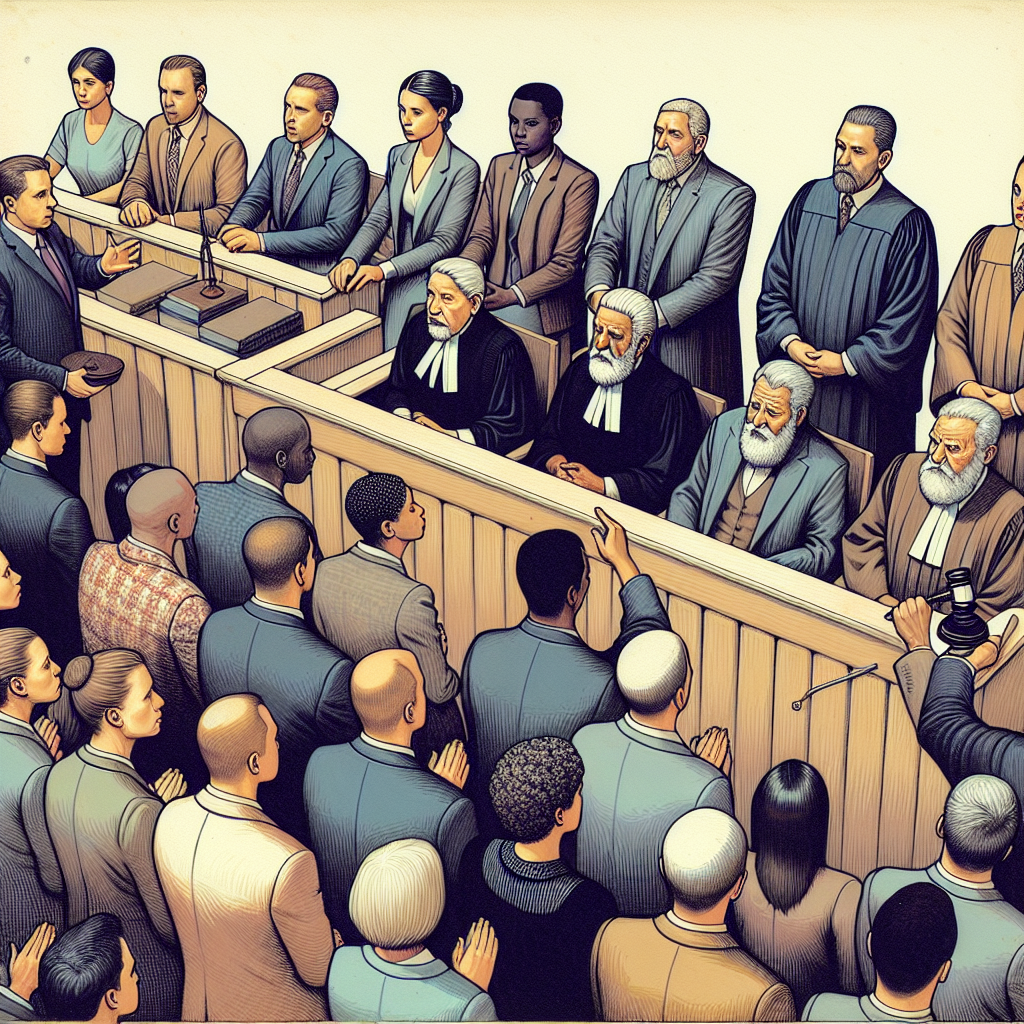The legal landscape surrounding immigration, federal authority, and the interpretation of statutes continues to evolve, particularly in light of recent Supreme Court cases. The discussions surrounding these cases often highlight the delicate balance between state and federal powers, as well as the implications of judicial interpretations on policy and individual rights. Understanding these nuances is essential for comprehending how borderlines, both literal and figurative, shape the legal framework within which these cases operate.
Borderlines in Immigration Law
The Immigration and Nationality Act stipulates that an alien who “arrives in the United States” can apply for asylum, which necessitates inspection by an immigration officer. This raises significant questions regarding the definition of arrival, particularly in cases like Noem v. Al Otro Lado, where the Trump administration challenged whether a noncitizen stopped on the Mexican side of the border qualifies as having arrived in the U.S. for asylum purposes. This case underscores the complexities of immigration law and the varying interpretations that can arise from different judicial perspectives.
In Noem v. Al Otro Lado, the court’s decision could set a precedent affecting future asylum seekers, particularly those who may be stopped at or near the border. The implications of this case could extend beyond individual rights, impacting broader immigration policy and enforcement strategies. Additionally, it raises critical questions about the obligations of the U.S. government in processing asylum claims and the rights of individuals seeking refuge.
As the legal arguments unfold, it is crucial to consider the potential ramifications of the court’s ruling. The ongoing debates about the limits of federal authority over immigration issues reflect a broader struggle between state interests and national policy. The outcome of this case could redefine what it means to be considered as having arrived in the United States and, by extension, reshape the landscape of asylum law.
Benchslaps and Judicial Authority
Judicial authority is often tested in cases that challenge established norms and interpretations of constitutional powers. For instance, in the case of Veneno v. United States, the petitioner questioned Congress’s constitutional authority to criminalize actions between members of the same Indian tribe on tribal land. The dissenting opinion from Justices Gorsuch and Thomas highlighted a critical examination of Congressional powers, particularly the plenary authority often assumed under the Indian commerce clause. This dissent raises important questions about the extent of federal oversight in matters traditionally governed by tribal sovereignty.
The tensions between state and federal powers are further complicated by the evolving interpretations of laws by the courts. In this context, the role of the judiciary becomes pivotal in either reinforcing or challenging existing legal frameworks. As these cases progress, they not only illuminate the boundaries of legal authority but also reflect the ongoing negotiations of power between different levels of government.
The legal community and the public alike are watching closely as these cases unfold. The outcomes will likely influence future legislative actions and judicial interpretations, particularly concerning immigration and tribal sovereignty. Given the current political climate, the stakes are high, and the implications of these rulings will resonate for years to come.
Understanding Burdens of Proof
In legal proceedings, the burden of proof plays a crucial role in determining the outcome of cases. It dictates which party is responsible for providing evidence to support their claims. The concept is particularly significant in immigration cases, where individuals may face significant challenges in proving their eligibility for asylum or other forms of relief. The complexities of these burdens can lead to disparities in outcomes based on the resources and legal representation available to the parties involved.

Moreover, the burden of proof is not merely a procedural requirement; it reflects deeper issues of justice and equity within the legal system. For example, the federal official challenge concerning the administration’s authority to enact policies without adequate justification raises questions about accountability and the standards required to uphold the rule of law. Similarly, the legal battle over national guard deployment illustrates how the burden of proof can shape the narrative surrounding state versus federal authority in emergency situations.
Understanding these dynamics is essential for anyone engaged in the legal field, as they highlight the intersection of law, policy, and individual rights. The evolving nature of these discussions will likely continue to influence future legal battles and the interpretation of existing laws, making it imperative for legal professionals to stay informed and engaged.
The legal landscape surrounding immigration and asylum claims has become increasingly complex, particularly in the context of evolving judicial interpretations and administrative policies. As courts grapple with the nuances of federal statutes and their implications on state laws, significant cases have emerged that challenge established precedents. This segment delves into the intricacies of borderlines, the implications of benchslaps, and the burdens of proof that shape the outcome of pivotal legal disputes.
Borderlines and Asylum Eligibility
The Immigration and Nationality Act clearly outlines the criteria for asylum eligibility, stipulating that an alien who “arrives in the United States” must undergo inspection by an immigration officer. A recent case, trump administration challenge, raises critical questions about the interpretation of what constitutes an “arrival” in the context of asylum claims. Specifically, the case of Noem v. Al Otro Lado examines whether a noncitizen who is intercepted on the Mexican side of the border qualifies as having “arrived” for purposes of asylum eligibility. The outcome of this case could redefine the parameters of asylum claims and significantly impact how immigration law is applied at the border.
In the Noem v. Al Otro Lado case, the legal argument hinges on the interpretation of the term “arrives” within the statute. The divided panel of the U.S. Court of Appeals has taken a stance that may influence future asylum applications, particularly for individuals who are physically present at the border but not officially admitted to the United States. This situation illustrates the ongoing tension between federal immigration policy and state-level interpretations of asylum eligibility, making it a focal point for legal scholars and practitioners alike.
Benchslaps in Court Proceedings
Benchslaps, a term often used to describe judicial reprimands delivered from the bench, play a significant role in shaping legal discourse and outcomes in immigration cases. Courts have increasingly shown skepticism towards government actions perceived as overreaching or lacking in legal foundation. In one notable instance, the court expressed doubt regarding the ICE contractor appeal, where the legitimacy of immediate appeals by contractors was questioned. Such judicial scrutiny not only affects the parties involved but also sets precedents that can influence future cases.

The implications of benchslaps extend beyond individual cases; they serve as a barometer for how courts view the government’s handling of immigration-related matters. Judges are increasingly willing to challenge the executive branch’s authority, particularly when actions appear to contradict established legal principles. This trend underscores the importance of maintaining a balance between enforcement and adherence to legal standards, especially in sensitive areas such as immigration and asylum.
Burden of Proof in Immigration Cases
The burden of proof in immigration cases is a critical factor that can determine the outcome of asylum claims and other immigration-related disputes. Applicants for asylum must demonstrate a well-founded fear of persecution based on specific grounds, which can be a daunting task given the subjective nature of such claims. In the case of Veneno v. United States, the court evaluated whether Congress possesses the authority to criminalize conduct occurring between members of the same Indian tribe, highlighting the complexities surrounding jurisdiction and the burden of proof required in these matters.
Judicial interpretations regarding the burden of proof have significant ramifications for both petitioners and respondents. Courts often require a higher standard of evidence from asylum seekers, complicating their ability to present their cases effectively. This reality underscores the need for legal representation and advocacy to navigate the intricate requirements of immigration law. The recent skepticism expressed by the court in prison inmate claim cases further illustrates the evolving nature of judicial expectations regarding burdens of proof, particularly in contexts where fundamental rights are at stake.
As the legal framework surrounding immigration continues to evolve, understanding the interplay between borderlines, benchslaps, and burdens of proof becomes essential for practitioners and policymakers. The outcomes of these cases not only affect individual circumstances but also shape the broader landscape of immigration law and policy in the United States.
In the landscape of legal discourse, the concepts of borderlines, benchslaps, and burdens of proof serve as critical focal points for understanding the dynamics of case law, particularly in relation to immigration and constitutional authority. These elements not only reflect procedural intricacies but also highlight the ideological divides that permeate judicial interpretations. As the Supreme Court engages with cases that test the limits of federal and state powers, the implications of these decisions resonate deeply within the fabric of American law.
Benchslaps and Judicial Authority
Benchslaps, a colloquial term for judicial rebukes delivered through opinions, often serve to clarify the boundaries of legal interpretations and the expectations of litigants. In cases like Veneno v. United States, the dissenting opinions issued by Justices Gorsuch and Thomas illustrate the tension between established precedents and evolving interpretations of congressional authority. Their argument challenges the notion of plenary power over tribal affairs, suggesting that the language of the Indian commerce clause does not inherently grant Congress the authority to regulate internal tribal matters. Such benchslaps not only reflect judicial discontent but also signal a potential reevaluation of long-standing legal doctrines, thereby reshaping the landscape of tribal sovereignty.

The implications of these benchslaps extend beyond mere judicial commentary; they influence the strategies employed by legal practitioners and the expectations of litigants regarding the outcomes of their cases. As these opinions circulate within legal circles, they contribute to a growing discourse on the limits of federal power and the rights of states and tribes. The Supreme Court’s willingness to engage with dissenting views indicates a recognition of the need for clarity and consistency in the application of law, particularly in contentious areas such as immigration and tribal authority.
Moreover, the dynamics of benchslaps can also serve as a warning to lower courts that may misinterpret or overreach in their rulings. By articulating their positions with clarity and force, the justices aim to guide the judicial process and ensure adherence to constitutional principles. This interplay between the Supreme Court and lower courts underscores the importance of maintaining a balanced approach to legal interpretation, one that respects both state rights and federal authority.
The Burden of Proof in Immigration Cases
The burden of proof in immigration cases often rests heavily on the shoulders of the applicants, particularly in asylum claims. In the context of the Immigration and Nationality Act, the requirement for an alien to be inspected by an immigration officer upon arrival in the United States establishes a critical threshold for asylum eligibility. The ongoing case of Noem v. Al Otro Lado raises pivotal questions about the interpretation of what constitutes an “arrival” in the United States, particularly for those seeking refuge while still on the Mexican side of the border. The outcome of this case may redefine the criteria for asylum applications and clarify the responsibilities of immigration authorities in processing claims.
As the Supreme Court deliberates on such matters, the burden of proof becomes a central theme, influencing not only the strategies of legal representation but also the experiences of individuals navigating the complex immigration system. The court’s decision could either reinforce or challenge existing interpretations of asylum law, thereby affecting countless individuals who are seeking safety and stability in the United States. Legal advocates must remain vigilant in monitoring these developments, as they hold significant implications for the future of immigration policy.
Furthermore, the interplay between the burden of proof and judicial interpretation underscores the broader societal implications of immigration law. As cases like Noem v. Al Otro Lado progress through the judicial system, they reveal the nuanced and often contentious debates surrounding national security, human rights, and the responsibilities of a sovereign state. The outcomes of these cases not only shape legal precedents but also reflect the values and priorities of the society in which they occur.
In conclusion, the examination of borderlines, benchslaps, and burdens of proof reveals a complex tapestry of legal thought that continues to evolve. As the Supreme Court confronts challenging cases that test the limits of authority and interpretation, the implications of its rulings will resonate across multiple facets of law and society. Understanding these dynamics is essential for legal practitioners, scholars, and individuals alike as they navigate the intricate landscape of American jurisprudence.